A force -F is applied at the topmost point of a cylinder of radius r and height h.
(a) If the cylinder remains at rest, then find distance of line of action of normal reaction from center of mass.
(b) Find coefficient of friction required so that the cylinder tooples before sliding.

(a) 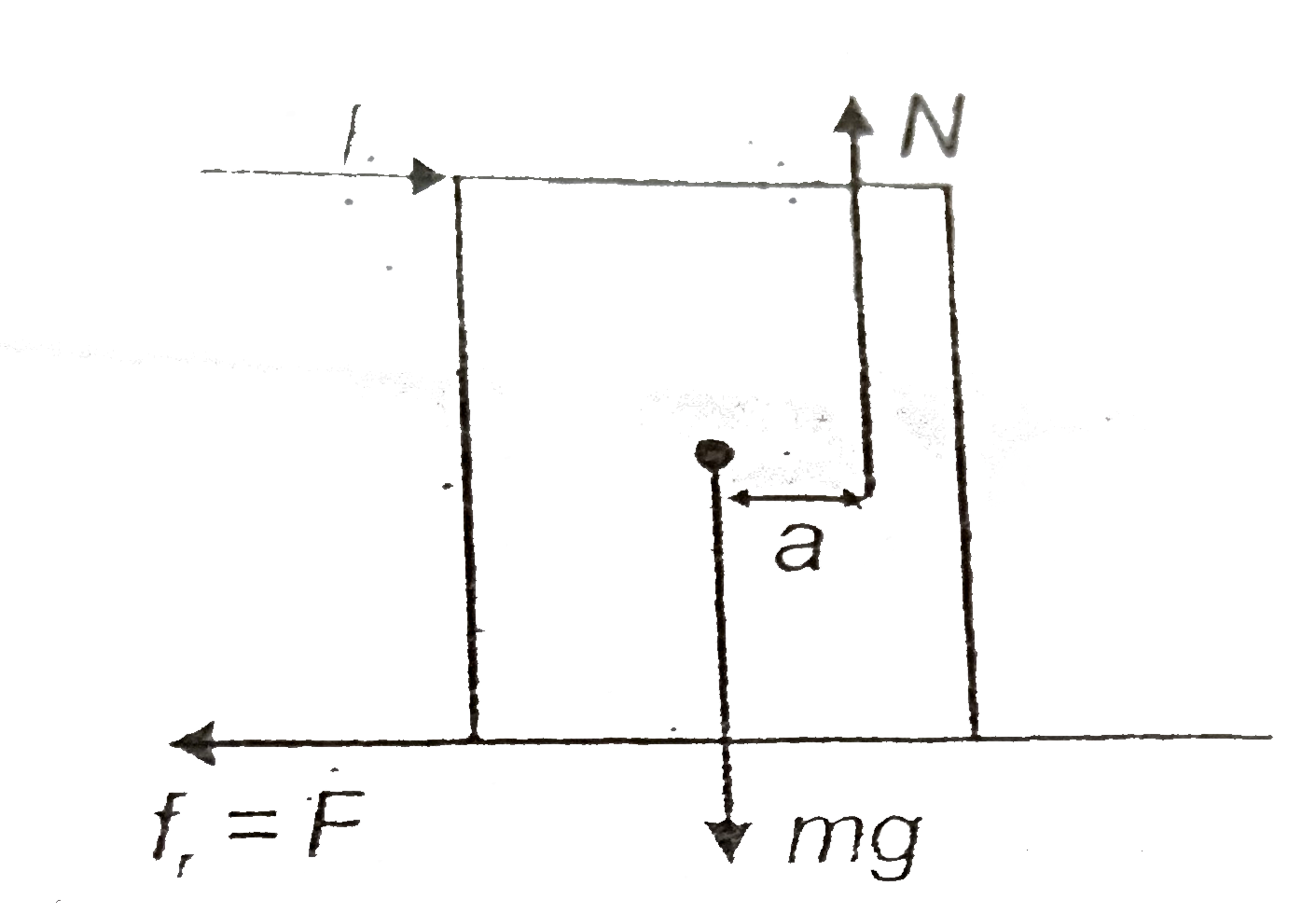
Since body is at rest, it is in translational equilibrium
fr=F
For rotational equilibrium,
τnet=0 (about center)
⇒F×h2+F×h2−Na=0 (∵fr=F)
⇒a=F⋅hN=F⋅hmg
(b) 
For toppling about point O,
τF>τmg
⇒F.h>mg.r
⇒F>mgrh
To avoid sliding, F<μmg
Therefore, mgrh<F<μmg
⇒rh<μ
Topper's Solved these Questions
- BOOK - AAKASH INSTITUTE ENGLISHCHAPTER - SYSTEM OF PARTICLES AND ROTATIONAL MOTIONEXERCISE - Illustration4videos
SYSTEM OF PARTICLES AND ROTATIONAL MOTION
- BOOK - AAKASH INSTITUTE ENGLISHCHAPTER - SYSTEM OF PARTICLES AND ROTATIONAL MOTIONEXERCISE - Assignment (Section - A) Objective Type Questions (One option is correct)62videos
SYSTEM OF PARTICLES AND ROTATIONAL MOTION
- BOOK - AAKASH INSTITUTE ENGLISHCHAPTER - SEMICONDUCTOR ELECTRONICS: MATERIALS, DEVICES AND SIMPLE CIRCUITSEXERCISE - Assignment (Section-D (Assertion and reason))5videos
SEMICONDUCTOR ELECTRONICS: MATERIALS, DEVICES AND SIMPLE CIRCUITS
- BOOK - AAKASH INSTITUTE ENGLISHCHAPTER - TEST 1EXERCISE - EXERCISE21videos
TEST 1
Similar Questions
Find the rate of change of the total surface area of a cylinder of radius r and height h , when the radius varies.
View SolutionThe moment of inertia of cylinder of radius a, mass M and height h about an axis parallel to the axis of the cylinder and distance b from its centre is :
View SolutionFind the moment of inertia of a solid cylinder of mass M and radius R about a line parallel to the axis of the cylinder and on the surface of the cylinder.
View Solutionforce F is applied at the topmost point of block of mass M. The force required to topple the block before sliding is (µ = coefficient of friction)
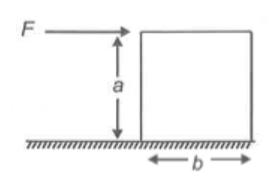 View Solution
View SolutionA uniform cylnder of radius r and radius of gyration is kept on a fixed wedge of inclination θ. When we push the wedge with a constant acceleration a, the cylinder rolls up the wedge. Find coefficient of friction between the cylinder and wedge.
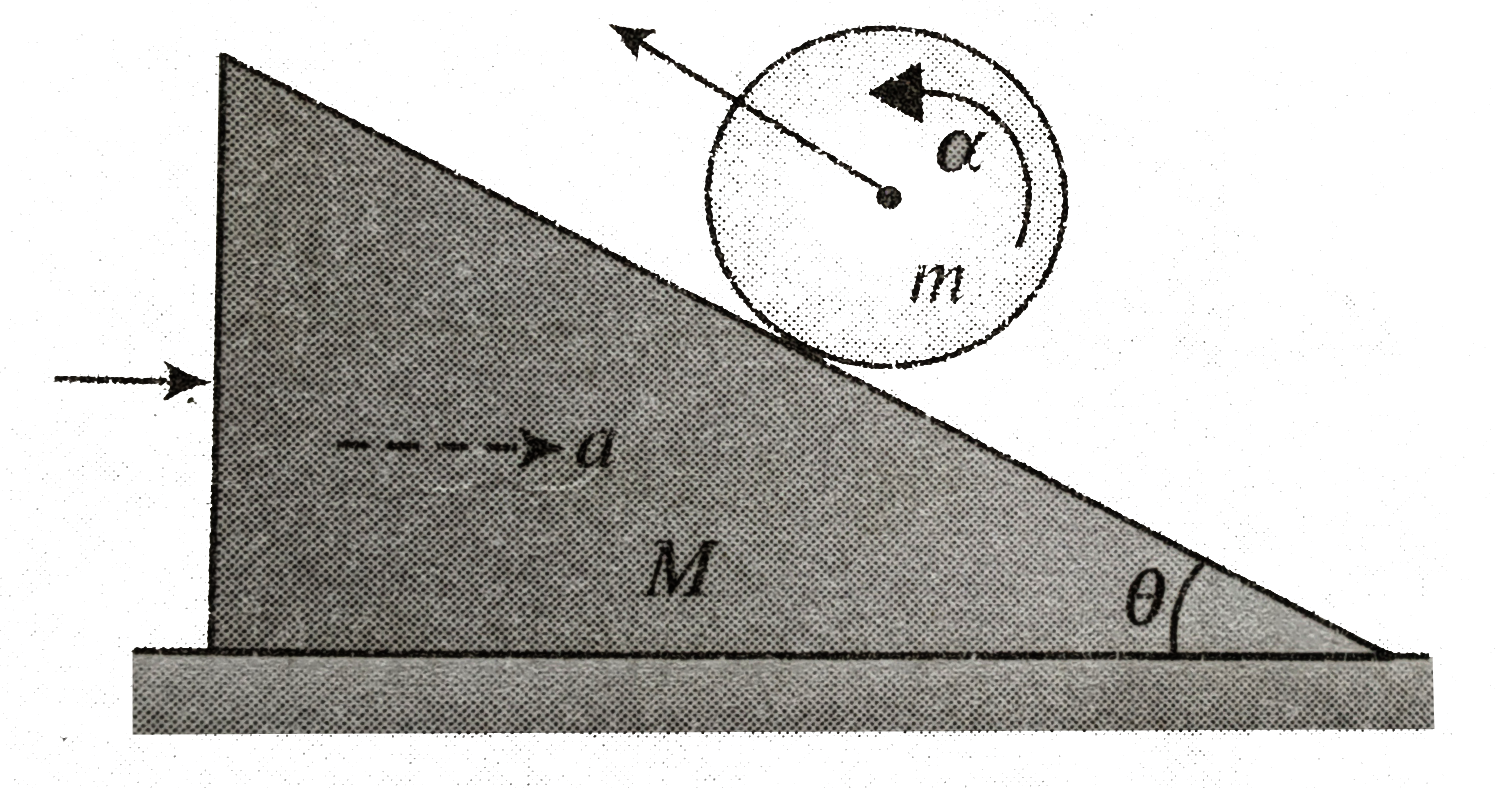 View Solution
View SolutionA force F is applied horizontally on a cylinder in the line of centre as shown in the figure. The cylinder is on a rough surface of coefficient of fricition μ. The direction of the friction force acting on the cylinder will be
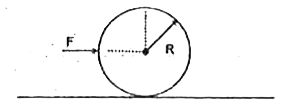 View Solution
View SolutionA load of mass m is attached to the end of a string wound on a cylinder of mass M and radius R. The string passes round a pulley.
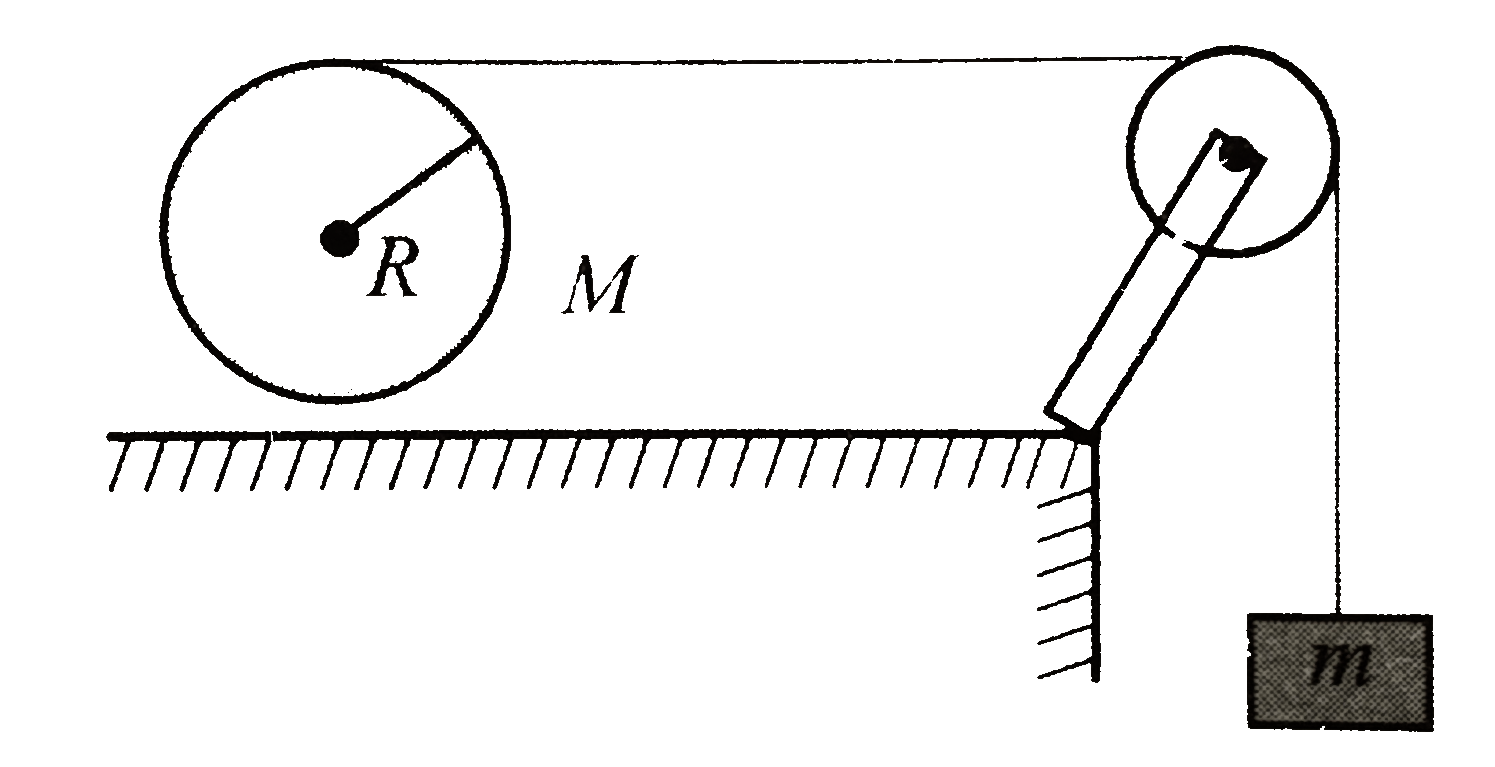
a. Find the acceleration of the cylinder M when it rolls.
b. If the coefficient of friction is μ. Find the accelerative of the cylinder when it slips and rolls.
c. Find the minimum value of coefficient of friction for which the cylinder rolls alwaysView SolutionA uniform cylinder of height h and radius r is placed with its circular face on a rough inclined plane and the inclination of the plane to the horizontal is gradually increased. If μ is the coefficient of friction, then under what condition the cylinder will (a) slide before toppling (b) topple before sliding.
View SolutionFind the work done by the frictional force in drawing a circle of radius r by a pencil of negligible mass with a normal pressing force N ( coefficient of friction μk).
View SolutionThe mass of a spool of wire in the form of a uniform solid cylinder is m and its radius is r. The wire is unwound under a constant force F. Assume that the cylinder does not slip, find (i) the acceleration of the centre of mass, (ii) the force of friction, (iii) what is the speed attained by the centre of mass after the cylinder has rolled through a distance, assume that the cylinder starts from rest and it rolls without slipping ?
View Solution

